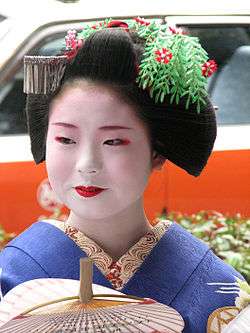Definify.com
Definition 2025
釵
釵
Translingual
Han character
釵 (radical 167 金+3, 11 strokes, cangjie input 金水戈 (CEI), four-corner 87140, composition ⿰釒叉)
References
- KangXi: page 1297, character 11
- Dai Kanwa Jiten: character 40191
- Dae Jaweon: page 1800, character 18
- Hanyu Da Zidian: volume 6, page 4173, character 14
- Unihan data for U+91F5
Chinese
| trad. | 釵 | |
|---|---|---|
| simp. | 钗 | |
Glyph origin
| Characters in the same phonetic series (叉) (Zhengzhang, 2003) | |
|---|---|
| Old Chinese | |
| 叉 | *sʰraːl, *sʰreːl |
| 杈 | *sʰraːl, *sʰraːls, *sʰreːls |
| 靫 | *sʰraːl, *sʰreːl |
| 汊 | *sʰraːls |
| 衩 | *sʰraːls, *sʰreːls |
| 扠 | *hr'eːl |
| 釵 | *sʰreːl |
| 芆 | *sʰreːl |
| 訍 | *sʰreːls |
Pronunciation
- Mandarin
- (Standard Chinese, Beijing)+
- Pinyin:
- Zhuyin: ㄔㄞ
- Wade-Giles: ch'ai1
- Gwoyeu Romatzyh: chai
- IPA (key): /ʈ͡ʂʰaɪ̯⁵⁵/
- (Standard Chinese, Beijing)+
- Cantonese
- (Standard Cantonese, Guangzhou)+
- Jyutping: caai1
- Yale: chāai
- Cantonese Pinyin: tsaai1
- IPA (key): /t͡sʰɑːi̯⁵⁵/
- (Standard Cantonese, Guangzhou)+
- Min Nan
- (Hokkien)
- Pe̍h-ōe-jī: thoe / chhai
- Tâi-lô: thue / tshai
- Phofsit Daibuun: toef, zhay
- IPA (Xiamen): /tʰue⁴⁴/, /t͡sʰaɪ⁴⁴/
- IPA (Quanzhou): /tʰue³³/, /t͡sʰaɪ³³/
- IPA (Zhangzhou): /tʰue⁴⁴/, /t͡sʰaɪ⁴⁴/
- IPA (Taipei): /tʰue⁴⁴/, /t͡sʰaɪ⁴⁴/
- IPA (Kaohsiung): /tʰue⁴⁴/, /t͡sʰaɪ⁴⁴/
- Note: thoe - vernacular, chhai - literary.
- (Hokkien)
| Rime | |
|---|---|
| Character | 釵 |
| Reading # | 1/1 |
| Initial (聲) | 初 (19) |
| Final (韻) | 佳 (31) |
| Tone (調) | Level (Ø) |
| Openness (開合) | Open |
| Division (等) | II |
| Fanqie | 楚佳切 |
| Reconstructions | |
| Zhengzhang Shangfang |
/t͡ʃʰˠɛ/ |
| Pan Wuyun |
/ʈ͡ʂʰᵚæ/ |
| Shao Rongfen |
/t͡ʃʰæi/ |
| Edwin Pulleyblank |
/ʈ͡ʂʰaɨj/ |
| Li Rong |
/t͡ʃʰɛ/ |
| Wang Li |
/t͡ʃʰai/ |
| Bernard Karlgren |
/ʈ͡ʂʰai/ |
| Expected Mandarin Reflex |
chāi |
| Zhengzhang system (2003) | |
|---|---|
| Character | 釵 |
| Reading # | 1/1 |
| No. | 1182 |
| Phonetic component |
叉 |
| Rime group |
歌 |
| Rime subdivision |
2 |
| Corresponding MC rime |
釵 |
| Old Chinese |
/*sʰreːl/ |
Noun
釵
- This term needs a translation to English. Please help out and add a translation, then remove the text
{{rfdef}}.
Synonyms
References
- “Query for 釵”, in 臺灣閩南語常用詞辭典 [Dictionary of Frequently-Used Taiwan Minnan], Ministry of Education, R.O.C., 2011.
Japanese
Kanji
Readings
Etymology 1
From Middle Chinese 釵 (*chrɛi). Compare modern Mandarin traditional 釵/钗 (chāi, chā, “hairpin; sai (weapon)”).
This character was originally used in Japanese to mean (ornamental) hairpin, and was read with a kun'yomi of kanzashi. The similarity in shape between a hairpin and the weapon called a sai later led to this character being used to refer to the weapon. In modern Japanese, this character is read primarily with its on'yomi of sai, and is used to refer to the weapon. The hairpin sense and kanzashi reading are more often spelled 簪.
Pronunciation
Noun
- (weaponry) a sai: a short blunt weapon with a wide guard, used mainly for defense against opponents armed with swords
See also
- 十手 (じって, jitte)
Etymology 2
/kamusaɕi/ → /kanzaɕi/
Originally a compound of 髪 (kamu, “hair, hair of the head”, Old Japanese combining form) + 挿し (sashi, “sticker-through (something that sticks through)”, the 連用形 (ren'yōkei, “continuative or stem form”) of verb 挿す sasu “to stick through, to insert”).[1][2]The sashi changes to zashi as an instance of rendaku (連濁).
Pronunciation
Alternative forms
Noun
釵 (hiragana かんざし, romaji kanzashi)
- a hairpin, particularly a fancy decorative hairpin used in Japanese women's hairstyles
Usage notes
This sense is more commonly spelled in kanji as 簪 or in kana as かんざし.
Etymology 3
May be a sound shift from kanzashi.[1]
/kanzaɕi/ → /kazaɕi/
Alternately, this may be a compound of 髪 (ka, “hair”, apophonic form of 毛 ke “hair”) + 挿し (sashi, “sticker-through”).[1]
A folk etymology occasionally encountered is that this as a compound of 花 (ka, “flower”) + 挿し (sashi, “sticker-through”), as many decorative hairpins have floral themes. However, this etymology would mix the Chinese-derived on'yomi of ka and the Old Japanese-derived kun'yomi of sashi, which seems less probable than the above two possibilities.
Pronunciation
Alternative forms
- 挿頭
Noun
釵 (hiragana かざし, romaji kazashi)
- (obsolete) an ornamental hairpin (see above)
Related terms
- 挿頭す (kazasu): to stick in one's hair (as for decoration); to add decoration on top of something
References
- 1 2 3 1988, 国語大辞典(新装版) (Kokugo Dai Jiten, Revised Edition) (in Japanese), Tōkyō: Shogakukan
- 1 2 3 2006, 大辞林 (Daijirin), Third Edition (in Japanese), Tōkyō: Sanseidō, ISBN 4-385-13905-9
- 1 2 1998, NHK日本語発音アクセント辞典 (NHK Japanese Pronunciation Accent Dictionary) (in Japanese), Tōkyō: NHK, ISBN 978-4-14-011112-3

